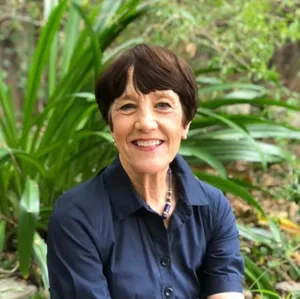Equitable Access to Quality Early Learning Experiences Matters
Early learning educators share what a future might look like, in which every child in the country has access to high-quality early learning experiences and the resulting long-lasting impacts.
:focal(1247x825:1248x826)/https://tf-cmsv2-smithsonianmag-media.s3.amazonaws.com/filer_public/3a/dc/3adc08c3-0aa1-4119-a87f-9365b2f89bb9/younglearner1.jpg)
Ensuring appropriate and effective education for their children is a concern all families naturally grapple with, and it is not limited to the K-12 education environment. The caregivers of our country’s youngest children often face particularly daunting challenges in finding programs that can do two things: care for their infants, toddlers, and preschoolers so they can work; and provide a stimulating environment so their children can learn.
Access to early learning programs is complicated. Unlike K-12 education, early learning is not a cohesive system or a continuous program, but a collection of offerings supported by federal, state, and local funding streams that have been created in response to research and caregiver demand. For example, Head Start programs are available at no cost to children ages birth to 5 from low-income families. The federal government sends funding for Head Start to states and local entities. States may, or may not, add additional money to these programs.
According to the National Institute for Early Education Research's recent report, "The State of Preschool 2021," forty-four states have developed pre-kindergarten programs for four-year-olds, and a few states are serving three-year-olds as well. In 2020-2021 29% of 4-year-olds and 5% of 3-year-olds were enrolled in pre-kindergarten, an 18% decrease from pre-pandemic levels. In most states pre-kindergarten programs are limited in reach and, in some of the states with the highest number of eligible children (Texas, Florida, California), program quality is low.
While Head Start, childcare, and pre-kindergarten are distinct types of programs, they serve the same purpose of providing a safe, stimulating, educational environment for children so their caregivers can work. However, because they are separate systems in most states, caregivers frequently have difficulty finding continuous services, and local communities are challenged to build early learning systems that are linked to the K-12 system.
Federal and state action in this area has been prompted by an impressive body of research from the fields of education, psychology, medicine, economics, and health showing that the quality of care and education (for children and caregivers) during the first five years of a child’s life form the very foundation for all later development. Using MEG brain imaging machines, researchers have created visual maps of real-time brain activity which show the rapid development that occurs when a child is stimulated. Strong brains are built from the earliest stages of life through healthy environments and reciprocal interactions with caring adults./https://tf-cmsv2-smithsonianmag-media.s3.amazonaws.com/filer_public/19/dd/19dd7830-be29-44cd-836f-0cb4ad29dbba/younglearner3.png)
Research from the National Head Start Association further shows that providing children a high-quality early learning experience reduces the need for future educational interventions, remediation, and social services. Additionally, it lowers criminal justice costs, increases self-sufficiency and productivity among families, and ensures better health outcomes in later life with lower rates of diabetes and heart disease.
When families select early learning and care programs for their young children, they are investing in brain-building and learning opportunities. Families with ample resources are able to purchase high quality care and education to ensure their children’s optimal development. Families with limited resources are not. The result: too many children enter school behind--- and children who enter behind tend to stay behind.
The research on the power of learning during the first five years of life and the havoc in families’ lives created by the Covid pandemic have attracted the renewed attention of state and federal policy leaders. Proposed in March of 2022, the Build Back Better Bill that didn’t pass would have provided $400 billion for states to create pre-kindergarten programs for three-and four-year-olds and improve childcare and Head Start for younger children. Advocates and state leaders are still lamenting the lost opportunity and worrying about how to build a system that serves the myriad needs of children and families without significant new resources. Government bodies in some states and local communities, like the New Orleans City Council and the New York State Education Department, are trying to increase funding for early learning and create a cohesive system so parents can find high-quality programs, no matter their zip code or the age of their young child.
Adding to the complexity of the early learning field is the aforementioned issue of quality. All programs are not equally successful. Quality matters. Research indicates that an evidence-based curriculum, coaching for teachers, and efforts to promote orderly but active play-based classrooms are important. Only quality programs produce improved educational and social outcomes.
At the Smithsonian, increasing access to high-quality early learning opportunities has been a part of the Institution’s larger education work since opening the Smithsonian Early Enrichment Center (SEEC) in 1988. SEEC is a model early childhood program with a museum-based curriculum that encourages infants through kindergartners to wonder and explore the world around them. SEEC educators use Smithsonian museums as resources in an emergent curriculum that responds to children's interests. Over the last 35 years, SEEC has worked to make this model accessible both in their own classrooms and across the country through curricular materials, in-person and virtual family programs, and professional development workshops.
/https://tf-cmsv2-smithsonianmag-media.s3.amazonaws.com/filer_public/b7/85/b78508bb-a6f6-4b36-8439-ff751b087706/younglearner4.png)
Inspired by SEEC’s work and the growing national recognition of the field writ large, some of the Smithsonian’s museums and research and cultural centers have created their own early learning offerings. Museum education is a natural fit for young children who learn more deeply through interdisciplinary experiences, and Smithsonian undertakings emphasize that museums should not only be welcoming physical spaces for young children, but that the collections provide endless rich learning opportunities for them. For example, a series of printable activity cards encourages children to build interdisciplinary skills through exercises like practicing math concepts while looking at pieces from Smithsonian art museums. Story time programs link historical topics and events to personal stories, encouraging children to engage with museum content while practicing important perspective-taking skills. Smithsonian educators also work actively alongside classroom teachers to create the resources that they need and to understand where quality is currently lacking.
At the Smithsonian and beyond, the need for greater support for early learning is clear. Our brains never develop more rapidly than in the first five years of life, and the quality of care and learning that happens during that time can have a significant impact on success, health, and happiness for the rest of our lives. These are the most critical years, so why aren’t they sustainably and appropriately funded? If we want a future where every child in the country has access to high-quality early learning experiences, then we must allocate the resources and support to make it possible.
Editor's Note: Join Libby Doggett and a panel of early learning experts at the Smithsonian's National Education Summit on July 27-28, 2022, where they will expand on these ideas in an interactive conversation. More information is available here: https://s.si.edu/EducationSummit2022


